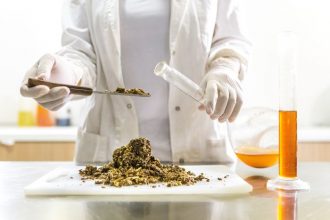
April 8, 2020
Similar Compounds at Overlapping pH’s Created Prima Facie Case of Obviousness
In Valeant Pharmaceuticals International, Inc. v. Mylan Phamaceuticals Inc., [2018-2097] (April 8, 2020) the Federal Circuit reversed and remanded that district court’s grant of summary judgment that claim 8 of U.S. 8,552,025 is not invalid.
The ‘025 claims stable methylnaltrexone pharmaceutical preparations. Claim 8 recites “[t]he pharmaceutical preparation of claim 1, wherein the preparation is stable to storage for 24 months at about room temperature.”
Mylan argued that the district court erred in at least two respects:
- By failing to hold that Mylan established a prima facie case that claim 8 would have been obvious because the pH range in the claim overlaps with pH ranges in the prior art for similar compounds; and
- By resolving disputed fact issues at summary judgment.
The Federal Circuit agreed with Mylan that the record supports a prima facie case of obviousness. Here, the pH range recited in claim 8 clearly overlaps with the pH range in the record art, but none of the references disclose the same drug as the one claimed.
The question was whether prior art ranges for solutions of structurally and functionally similar compounds that overlap with a claimed range can establish a prima facie case of obviousness. The Federal Circuit conclude that they can and, in this case, do.
The Federal Circuit noted that its case law reflects an understanding that skilled artisans can expect structurally similar compounds to have similar properties, and that that an obviousness analysis can rely on prior art compounds with similar pharmacological utility in addition to structural similarity.
Because these three molecules bear significant structural and functionality similarity, and because the prior art of record teaches pH ranges that overlap with the pH range recited in claim 8, Mylan has at least raised a prima facie case of obviousness sufficient to survive summary judgment.




































